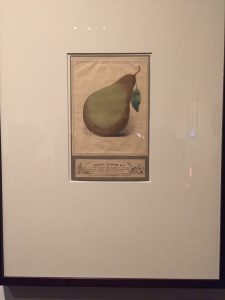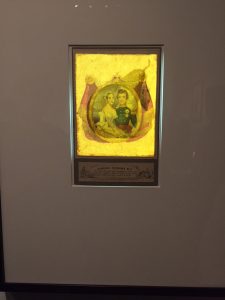Ambiguous figures and visual puns have long been a source of popular entertainment. In 1830s England, publishers came up with a printing technique that allowed them to create illustrations with double meanings. One view is seen when the image is illuminated from the front and a different view is seen when the image is illuminated from the back. During the same visit to Boston’s MFA at which I encountered Ian Hunter and M.C. Escher, I also came across The Pear, published around 1840 by T. Dawson, in which the pear/pair pun is charmingly visualized…


Visual puns like these are related to anamorphoses, images or projections whose full aspect can only be taken in from a single vantage point. Swiss artist Markus Raetz makes amusing anamorphoses, which you can see in this video of Yes-No (2003), a sculpture that displays the words “yes” or “no” depending on the position of the viewer.